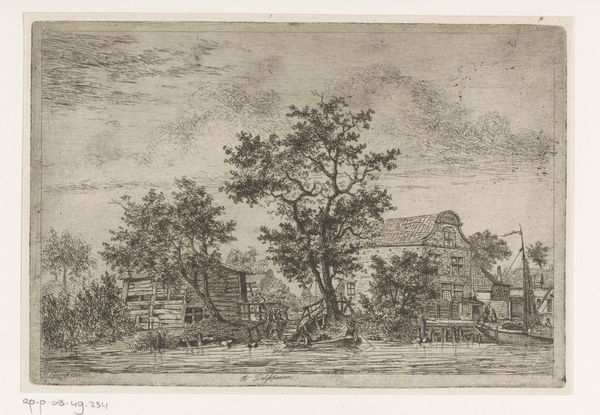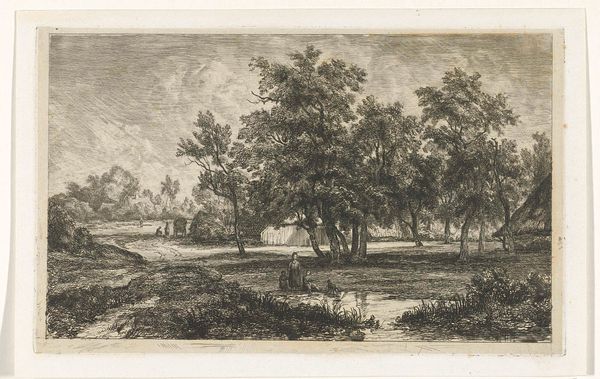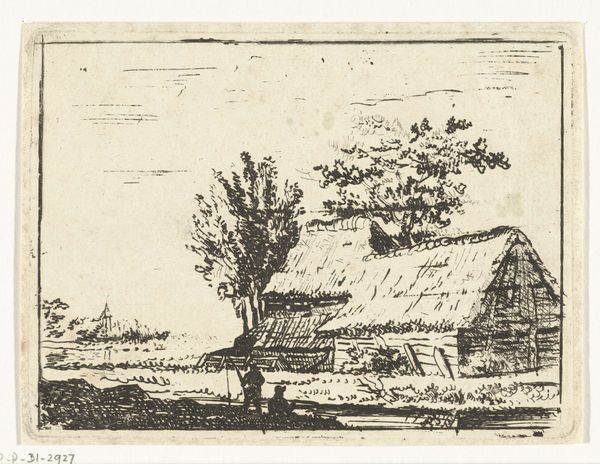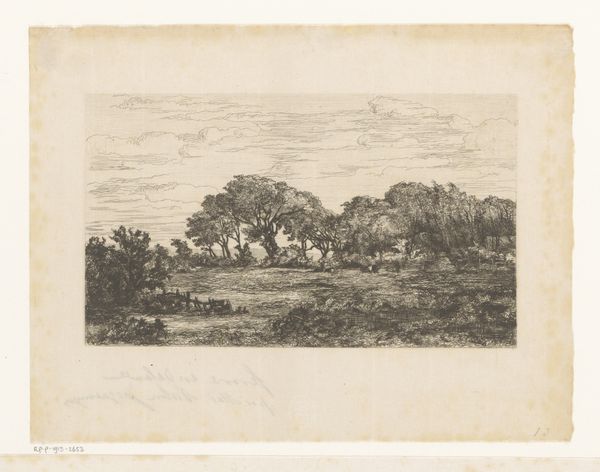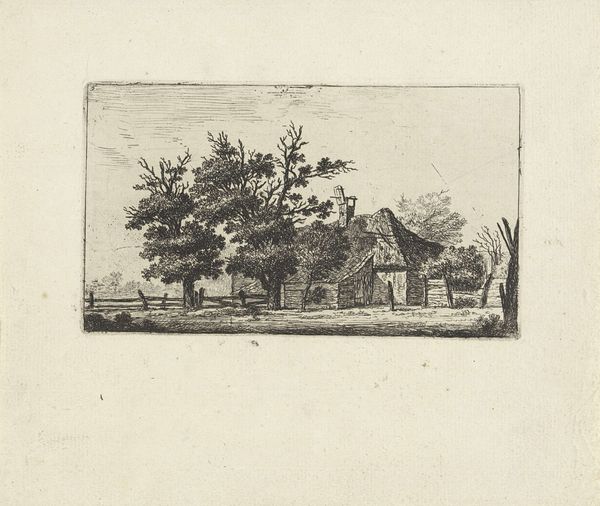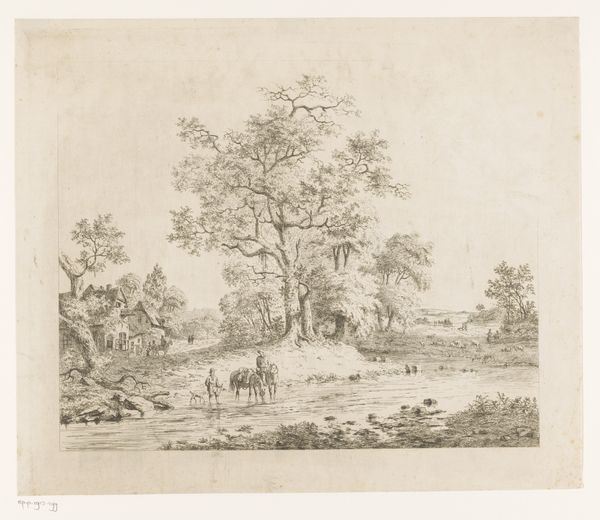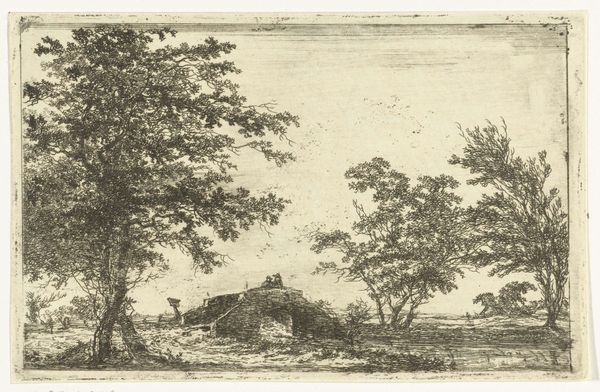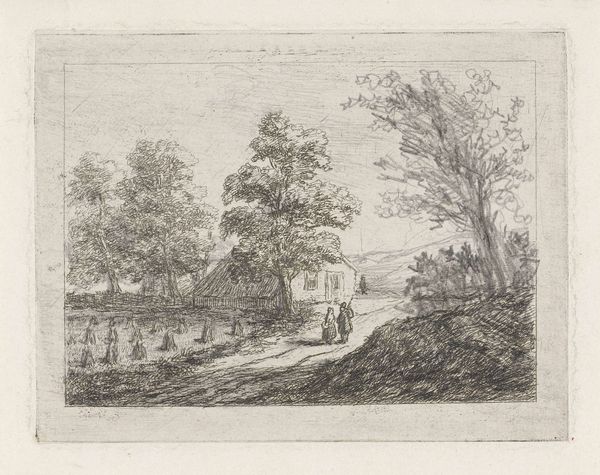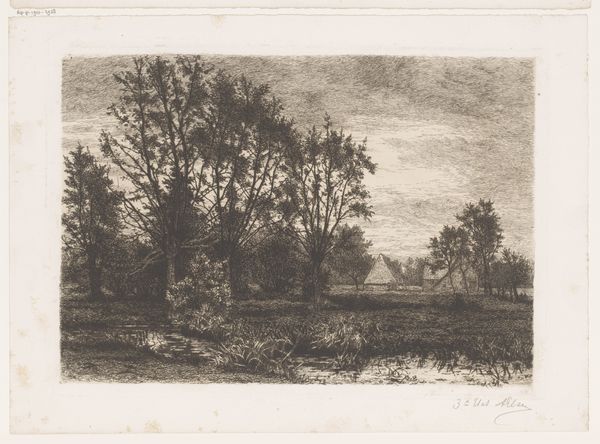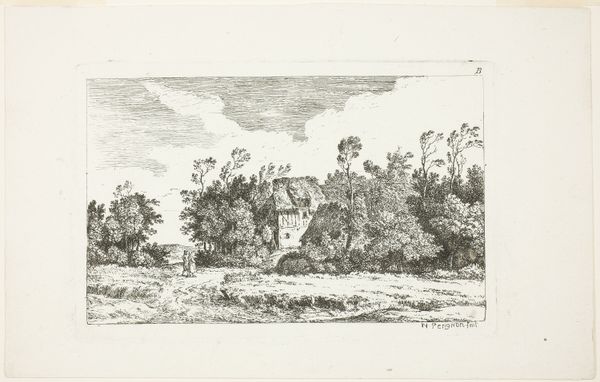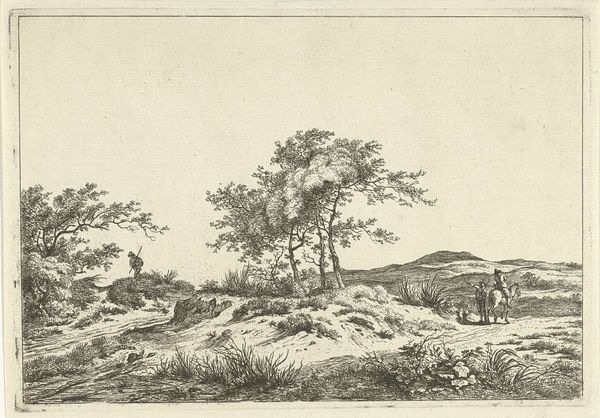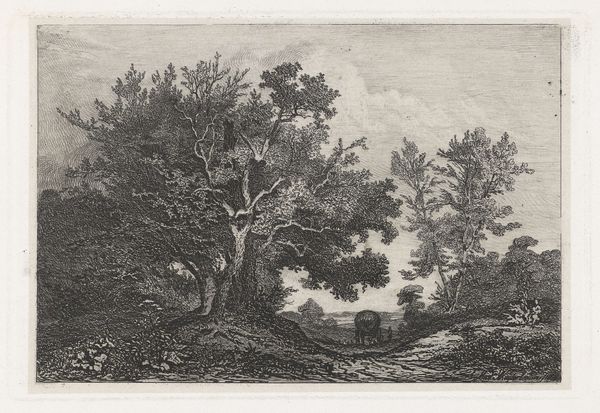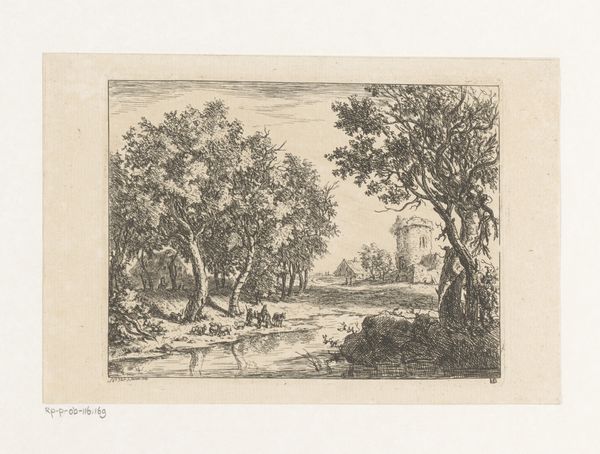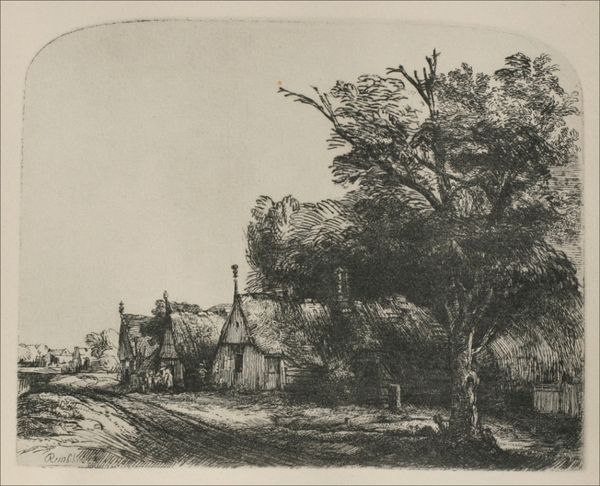
etching
#
etching
#
landscape
#
etching
#
realism
Dimensions: height 115 mm, width 166 mm
Copyright: Rijks Museum: Open Domain
Editor: This is "Hofstede," an etching created in 1864 by Meyer. It presents a rather simple thatched house surrounded by trees and a field. There's a distinct feeling of serenity to it; like stepping back in time. What symbols do you see woven into this pastoral scene? Curator: I see a potent representation of "home" here. Beyond simply shelter, consider what a house meant then, especially depicted in such detail. The thatched roof is crucial; it symbolizes tradition, a connection to the land, and the cycles of nature itself. This isn't just a house; it's a visual anchor. What feeling do you get from the dominating trees? Editor: They feel protective somehow, like watchful guardians. And they create this frame, which forces your focus to that small humble building at its center. Curator: Precisely. Think of trees as symbols of life, growth, family roots, and even knowledge. Arranged so deliberately, Meyer seems to be speaking about a specific continuity of values. Look closer—the light hitting that simple house amidst all this flourishing nature suggests enduring strength. Why choose to isolate and highlight *that* particular space? Editor: Is it the sense of heritage that’s emphasized by this rural setting? Like, the etching evokes something deep and persistent? Curator: Exactly. Rural settings are often nostalgic spaces, recalling a collective past—the way we were, and perhaps the way we hope to return. Etchings were also important means of distributing visual information and ideals about how society should be represented and therefore imagined, shared and remembered. Meyer is reminding us to remember. Editor: I see, it’s more than a quaint landscape. The enduring image here prompts reflection on memory. Curator: Indeed! Every mark tells a story. Hopefully now it reveals something to you, too.
Comments
No comments
Be the first to comment and join the conversation on the ultimate creative platform.
